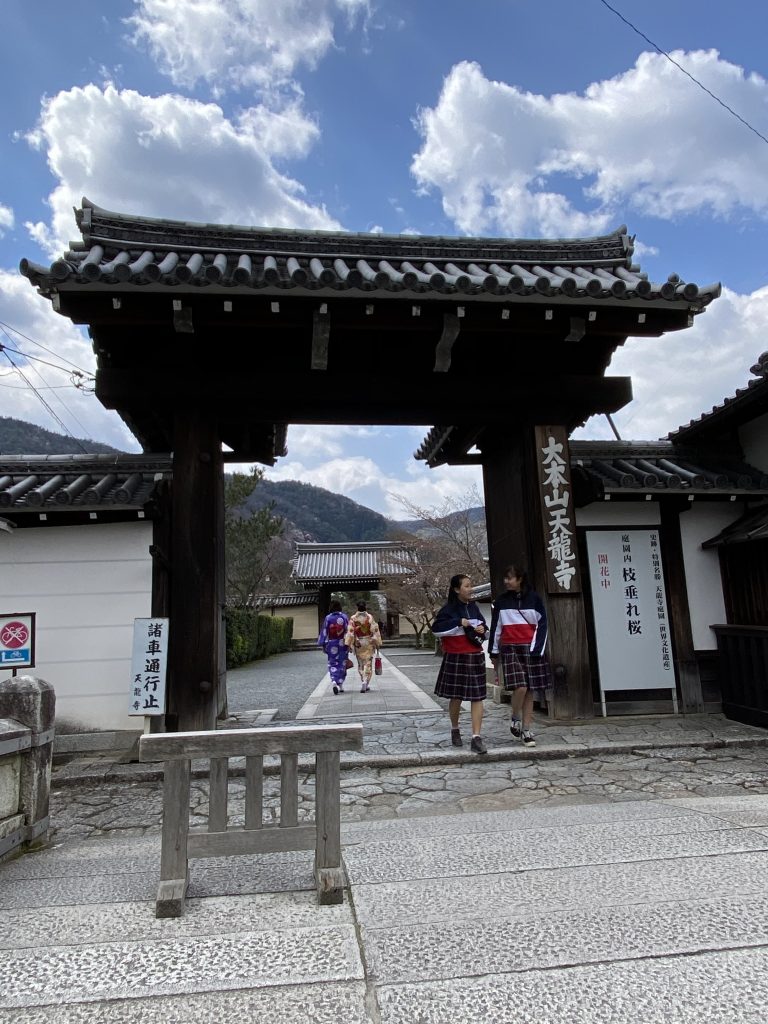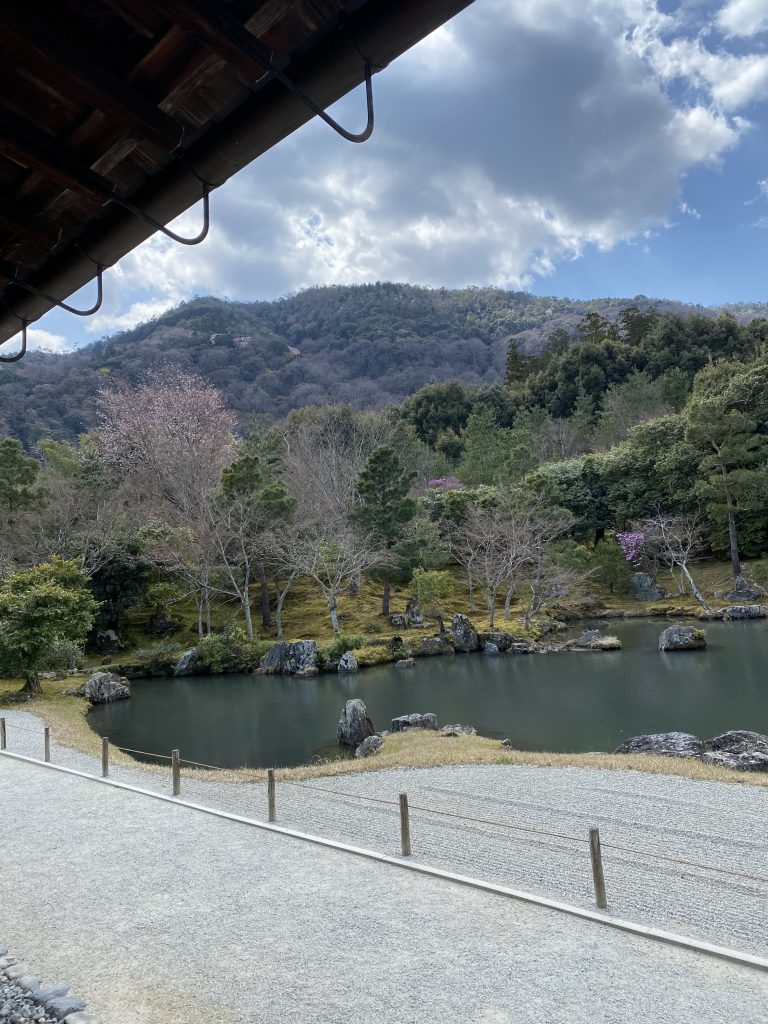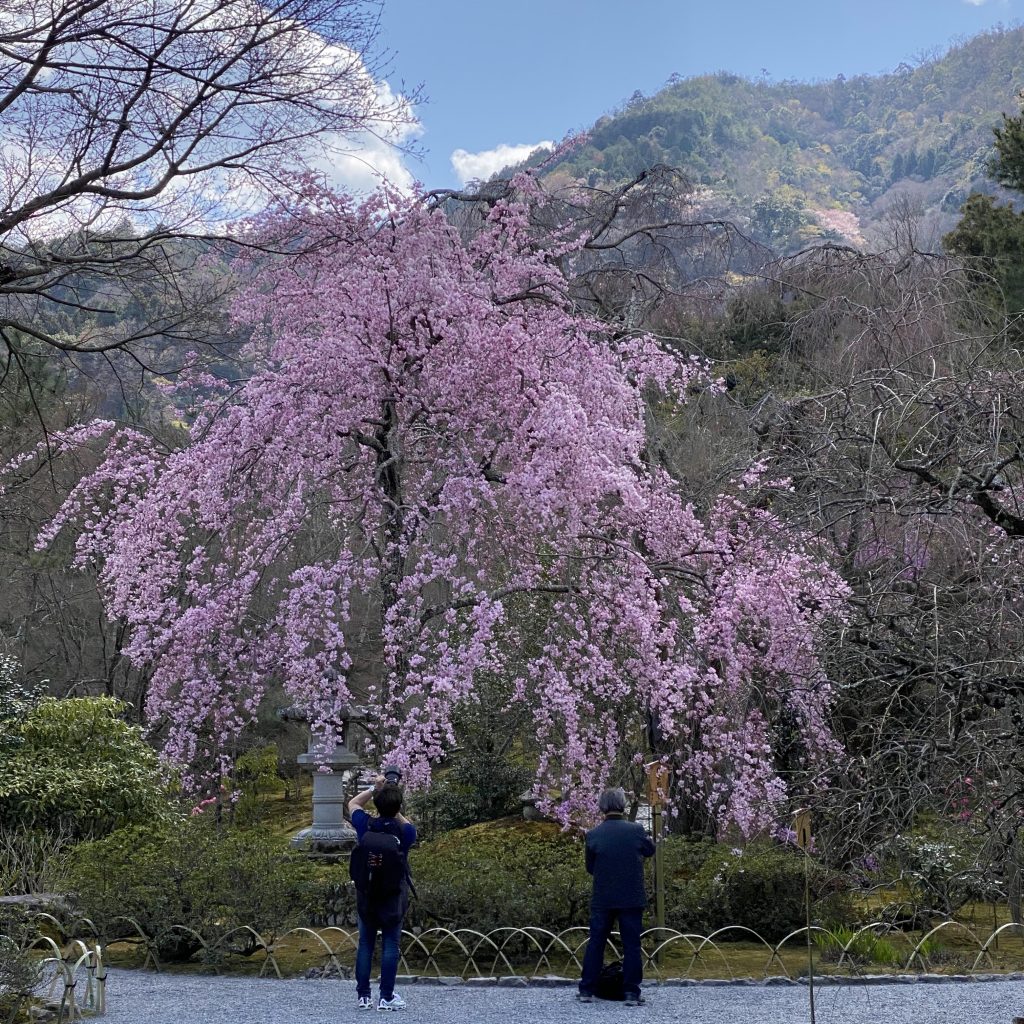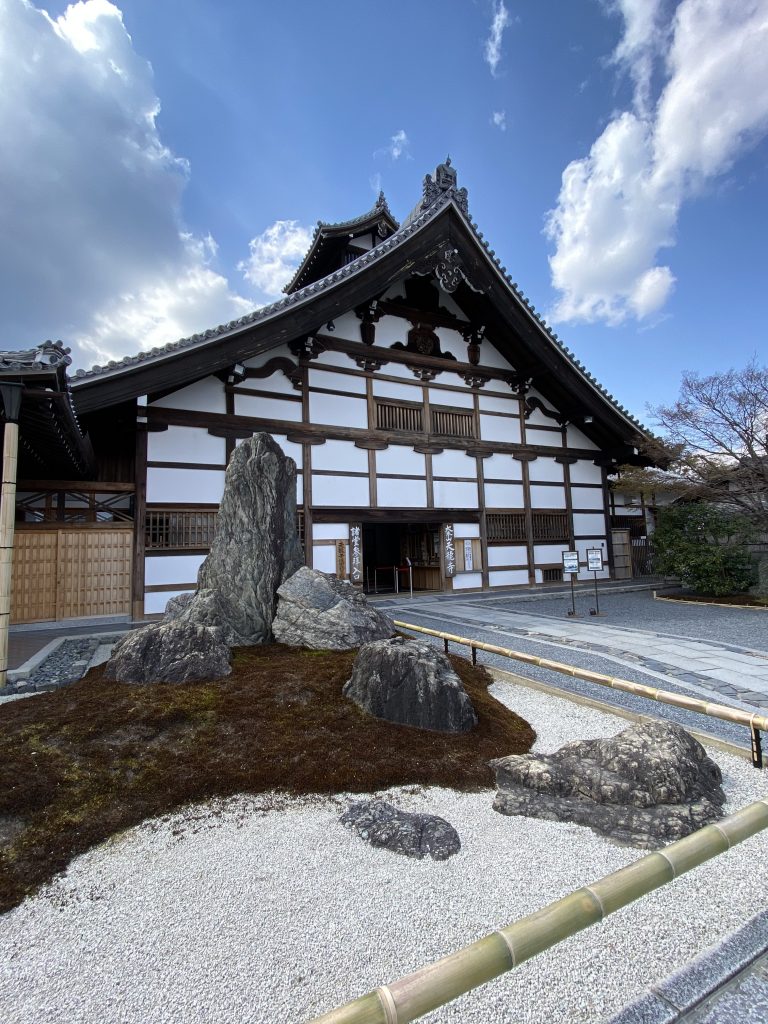Tenryu-ji (Temple of the Heavenly Dragon), located in the Sagano district of Kyoto, is the head temple of the Tenryu-ji branch of Rinzai Zen Buddhism. It was established in 1339 by the Shogun Ashikaga Takauji(1305-58) in memory of Emperor Go-Daigo(1288-1339), who died in Yoshino following the civil war that brought the Ashikaga family to power. The eminent Zen master Muso Soseki(1275-1351) was appointed the temple’s founding abbot.
The site of Tenryu-ji had earlier been occupied by the temple Danrin-ji, established in the ninth century and historically significant as the first Zen temple in Japan. In the thirteenth century Emperor Kameyama(1249-1305) built a villa on the property , and it was here that Go-Daigo, his grandson, was raised and educated. With Go-Daigo’s passing Ashikaga Takauji ordered the villa’s conversion to a Zen temple.
In order to finance the temple’s construction, Muso Soseki commissioned a vessel , known as the Tenryu-ji Ship, on a trade mission to Yuan-dynasty China. By 1343 most of the major buildings of the temple were complete. Soseki’s lineage prospered, playing a leading role in the flourishing Zen literary culture known as gozan bungaku. Tenryu-ji itself was gozan bungaku. Tenryu-ji itself was ranked first of the “Five Zen Mountains of Kyoto”(Kyoto gozan) In the centuries since its founding “Tenru-ji has been ravaged by fires a total of eight times, most recently in 1864. Most of the present buildings thus date only to the Meiji period (1868-1912). However, the landscape garden behind the Hojo, (main hall) is one of the oldest in Japan, retaining the same form as when it was designed by Muso Soseki in the fourteen century. Known as the Sogenchi Garden, it was the first special Historical Scenic Area named by the Japanese government , and in 1944 it was designated by the United Mations as a World Cultural Heritage site.





